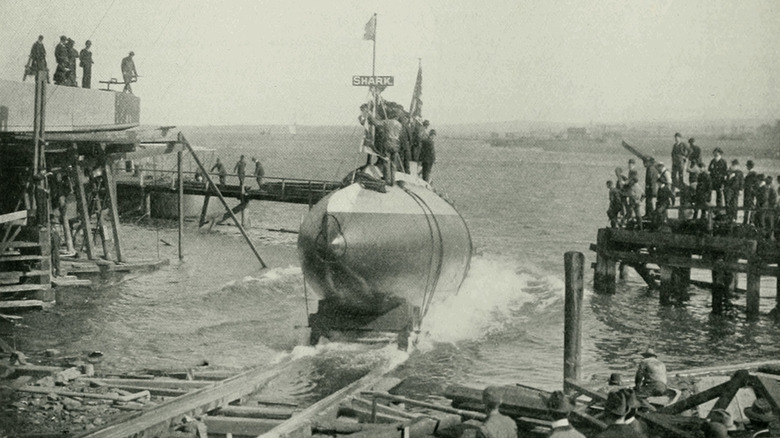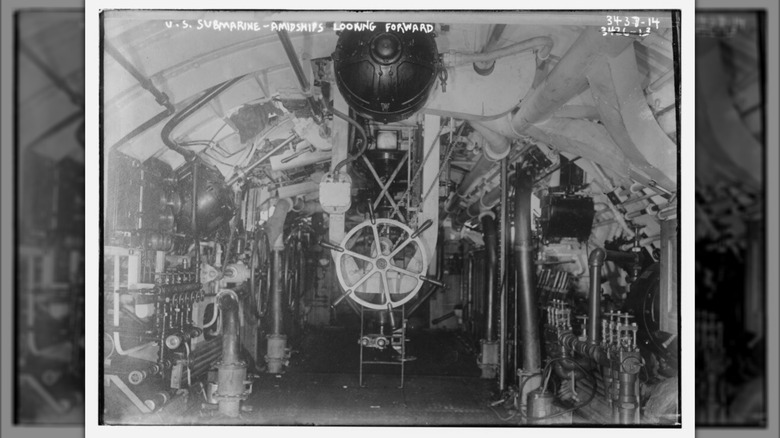Why Are Some Submarines Called Pig Boats?
We typically associate a pig with nasty, dirty things. For instance, the phrases "wallowing around like a pig" and "a pig in mud" both point to the fact that pigs love to roll around in the mud — even if they do so for an assortment of very essential reasons, none of which have to do with them being nasty or dirty. We have a Peanuts character called Pigpen, a less-than-clean lad created by Charles M. Schulz, who always has a cloud of filth following him around. The term "pig out" comes from the fact that pigs will eat almost anything, and we derogatorily call people a "pig" or "swine" as an insult.
In general, the much-maligned pig has gotten a bad rap, but it's their dirty, nasty reputation that's partly behind why submarines were called pig boats. First, let's clarify that submarines are referred to as boats and not ships because of their size, means of transport, and, most importantly, tradition. It's a blurry line with no hard and fast rule, so it can be confusing to the uninitiated civilian.
The "pig" part isn't quite as ambiguous, but, much like the long-standing Navy tradition of calling subs boats, it goes back a long time. A pig boat is a term for a group of warships (or is it warboats?) that once sailed the seas during the first few decades of the 20th century. Think of them as the precursors to the much more advanced nuclear submarines in the U.S. Navy's current fleet.
Early submarines earned the pig boat badge of honor
Before WWI erupted, virtually every submarine was the same. They were small (under 1,000 tons displacement) and had a minimal cruising range. Torpedoes were their only armaments, and they lacked periscopes. Without a way for the captain to see above the waterline and navigate underwater, these early subs had to surface and look through deadlight windows to get their bearings.
This up-and-down motion happened so frequently that sailors aboard surface ships began comparing them to a porpoise breaching the water (a term called porpoising). Because grizzled sailors (and others) called porpoises "sea pigs," it didn't take long before they were jokingly referring to subs as such. Furthermore, these small crafts had to be transported by larger ships thanks to their limited range, and any small craft carried by a larger ship was known in Naval parlance as a "boat."
The working conditions inside the tight confines of these subs were nothing short of horrendous. Sailors had very little access to fresh water, and the toilet was typically nothing more than a bucket. There was no ventilation, so heat and humidity combined with human sweat and noxious fumes from the engines compounded the smell exponentially, making it difficult to breathe. In every respect, the insides were much like living and working in a pig sty. Ultimately, the combination of all these unfortunate limitations earned these early subs the nickname "pig boats."

